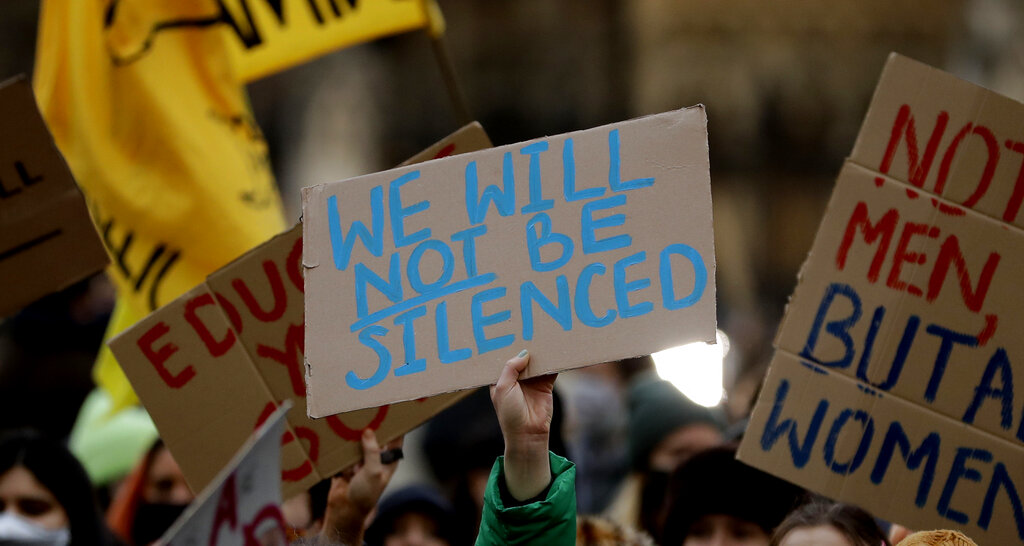
Underneath the surface of the Covid-19 pandemic lies a “shadow pandemic”: domestic violence.
With lockdowns forcing people to stay inside their homes, violence against women has skyrocketed while victims have been silenced more than ever. But social media has helped give them a voice in isolation.
High rates of domestic violence reports and Covid lockdowns seem to have gone hand-in-hand. It became more difficult for victims to reach out for help and gain access to safe channels of communication or domestic violence resources such as screenings performed at doctor’s offices faced with state restrictions.
“Covid didn’t create domestic violence, but it created additional tools for abusers to use against their victims,” said Emily Sack, professor at Roger Williams School of Law professor and leading expert in domestic violence.
By forcing people to stay inside their homes, many victims of intimate partner violence were trapped with their abusers.
In 2020, 15.5% of all police calls in New York City involved a domestic incident and 56.4% of domestic violence calls involved an intimate partner, according to data from the New York Police Department. The National Domestic Violence Hotline saw an increase of 9% in the number of contacts compared to 2019.
“The home, for domestic violence victims, is the most dangerous place to be. But with Covid, it’s where we expect people to be,” said Tahlisa Brougham, a New York University Law student and Vice President of Events and Education of the Domestic Violence Advocacy Project at the school.
In response to the rising numbers, Secretary to the Governor Melissa DeRosa and the New York State Council on Women and Girls announced the creation of a Covid-19 Domestic Violence Task Force in order to provide victims with more resources to handle their unique needs during the pandemic.
But other factors, including financial isolation, play a large role in domestic violence. By cutting victims off from sources of income and financial independence abusers are able to maintain control over their victims.
While job loss due to the pandemic created stress for many Americans, the consequences of unemployment are even more complicated and dangerous for victims of domestic violence.
“If victims themselves have lost their jobs that obviously cuts them off financially and makes it much more difficult to leave a situation,” said Sack. “If the abuser has lost their job, that makes them more likely to be in a situation where they’re much more likely to blame the victim and adds to the potential level of abuse and violence.”
Even as restrictions have been eased across New York, the increase in sexual violence that was seen throughout the lockdown has persisted.
Citywide reports of rape have been up a staggering 93% from last April, according to metrics released by the New York Police Department. Calls of other sex crimes have increased by 180%.
Yet online conversations around abuse and violence against women also took off during the pandemic.
Sarah Everard’s disappearance and death in London in March sparked worldwide outrage at the violence women face in their day-to-day lives. Women’s groups, protesters and women of all walks of life called on governments, police and men to be held accountable and make the changes necessary for women to feel safe.
Everard’s case reignited conversations started by the MeToo movement, and brought women’s issues to light again in a time where social media activism has become commonplace and women feel more empowered than ever to share their stories.
“It was a larger conversation that happened on social media, of talking about and educating the masses, and by the masses I mean mostly men,” said Nina Randolph, co-founder of @iamEMPWR, an Instagram page dedicated to raising awareness and providing resources about sexual assault and healing from trauma.
Activists and educators alike have taken to social media to attempt to dispel myths around violence against women that only perpetuate misconceptions about rape and sexual violence.
“Our idea of sexual assault is that image of some scary man in a dark alleyway that you don’t know pulling you aside and raping you – a stranger,” said Siena Moran, an NYU sophomore and one of the founders of @the.sexbook on Instagram, an online resource for comprehensive sexual education.
“But with sex-ed you would learn that most cases of sexual assault and rape are from somebody that the victim knows – and half the time… it’s a significant other or somebody that they have a really close relationship with,” said Moran.
The use of social media to educate masses as well as serve as an activist platform has allowed conversations around these issues to quickly spread to groups that may not have been previously engaged in them.
“I think social media is the match, setting aflame where there is a bunch of work to be done after,” said Randolph. “But social media sets it ablaze.”








